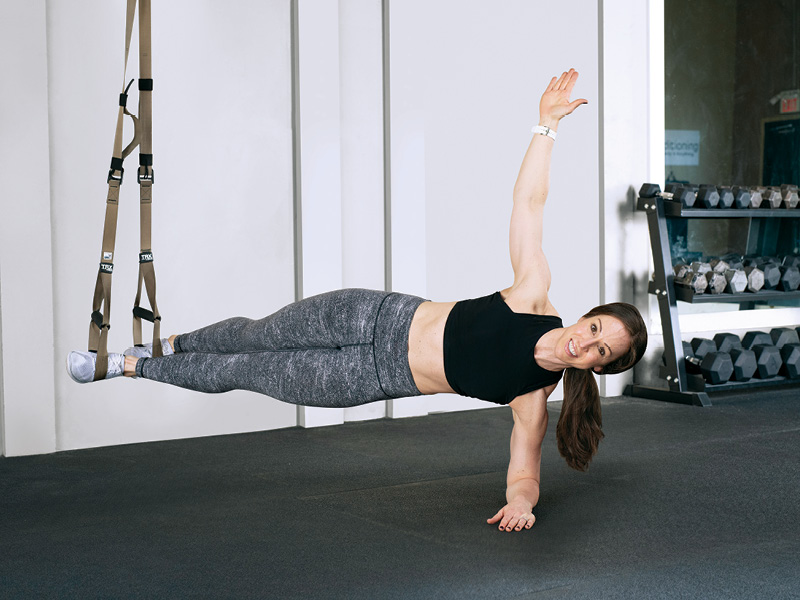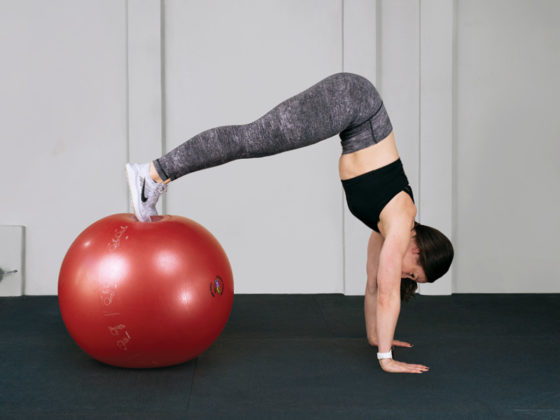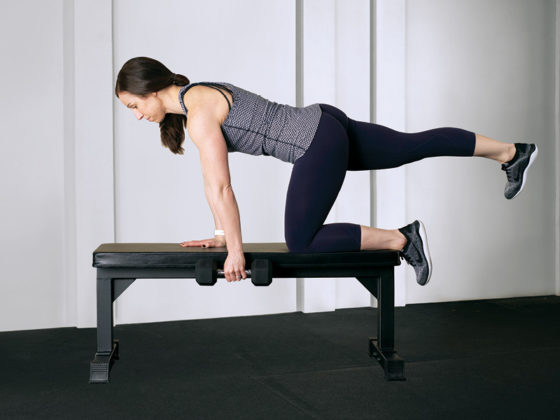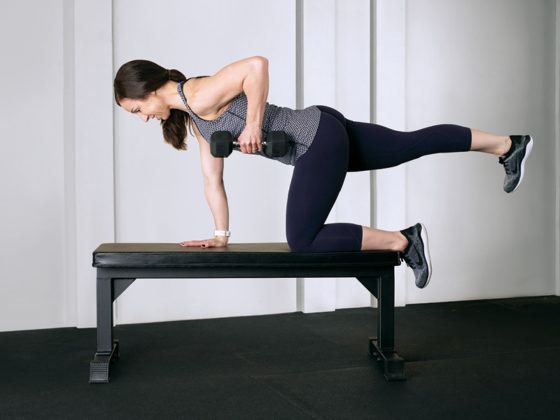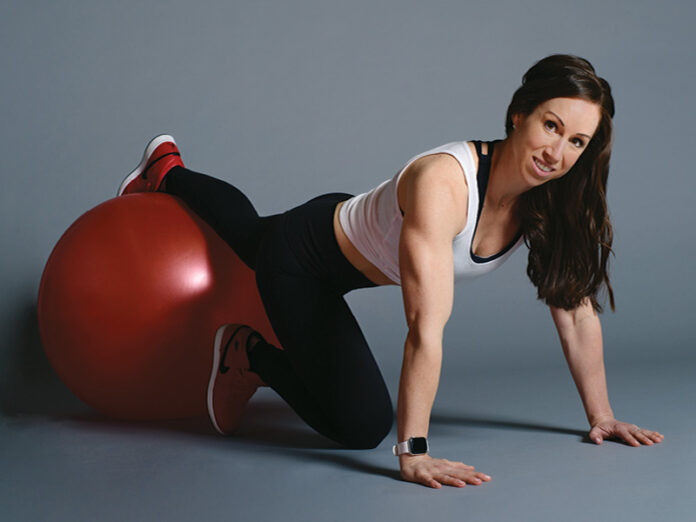
Achieving core strength and stability involves multiple muscles working together to stabilize the spine and pelvis. However, the word ‘core’ is often wrongly mistaken for the well-known ‘6-pack’ muscles. The core musculature is the foundation of the body, and any weakness or imbalance could cause injury and affect optimal function. Performing exercises like the ones here will help build a strong core that can control movements and transfer energy effectively in sport and everyday life.
Warm-up
- Perform 5 minutes of cardio (skipping rope, jogging etc.)
- Pelvic Tilt x 10
- Glute Bridge x 10
- Fire Hydrant x 10/leg
- Mountain Climber x 10/leg
- Plank x 30 seconds
The Workout
Stability Ball Bridge With Leg Raise
3 sets | 10 reps per leg
Begin by lying on your back with legs elevated on a stability ball. Flex your glutes and raise your body up in the air with legs extended. Once at the top position, brace your core to protect your low back and raise one leg straight up in the air, while maintaining stability through the rest of the body.
Drop the leg back down and raise the alternate leg with same form, before lowering your body back to the ground.
- Beginner: Remove the leg raise and simply raise your body up and down
- Intermediate: Keep arms on the ground beside you for added stability
- Advanced: Raise arms straight up in the air
Bird Dog Row
3 sets | 10 reps/arm
From a kneeling position on a bench, perform a dumbbell row with your right arm while extending your left leg back. The goal is to maintain a straight line from head to toe, a neutral spine and full extension of the elevated leg throughout the entire movement.
- Beginner: Perform without the dumbbell
- Intermediate: Use a dumbbell that is approximately 70 per cent of your regular dumbbell row
- Advanced: Increase the weight you are lifting or kneel sideways on the bench to narrow the base of support
Stability Ball Pike
3 sets | 10 reps
Begin in push-up position with feet elevated on a stability ball, hands under shoulders, and back flat. The ball should be on your shins.
- Using your abdominals, pull your body up towards the ceiling with feet pointed so that the ball rolls forward slightly as you rise up. After a slight pause at the top of the exercise, slowly lower your body back to the starting position watching that your hips do not drop below the flat line between your shoulders and feet.
- Beginner: Perform from plank position with feet on the ground
- Intermediate: Perform with legs elevated on stability ball
- Advanced: Add a push-up between each rep
Farmer’s Walk
3 sets | 20-30 metres or 50-60 metres
Walk at a controlled steady pace with a tall spine, shoulders back, and core braced throughout the entire walk. The key to keeping the walk controlled is to take smaller steps, while flexing your glutes and looking straight ahead.
This exercise can be performed as an endurance drill (lighter weights for longer distance 50-60 m) or for strength (heavier weights for shorter distance (20-30 m).
- Beginner: Carry lighter weights and focus on form
- Intermediate: Use a loaded trap bar
- Advanced: Carry a weight on one side only
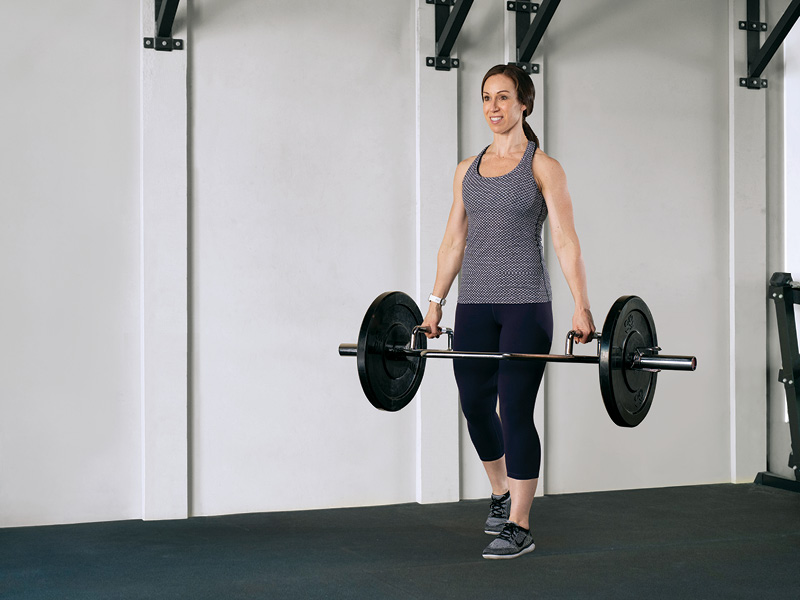
Suspension Side Plank
3 sets | 20-30 seconds per side
Adjust the suspension straps to about mid-calf height and lie on one side in line with the straps. Place your feet in the anchors with the top leg in front and bottom leg in back (heel to toe position).
With your elbow directly under your shoulder, lift your body up into plank position while squeezing your feet together and looking straight ahead.
- Beginner: Side plank without the feet in the suspension straps
- Intermediate: Hold for 20-30 seconds per side with feet in suspension straps
- Advanced: Once inside plank position, tuck knees in and out while maintaining form
